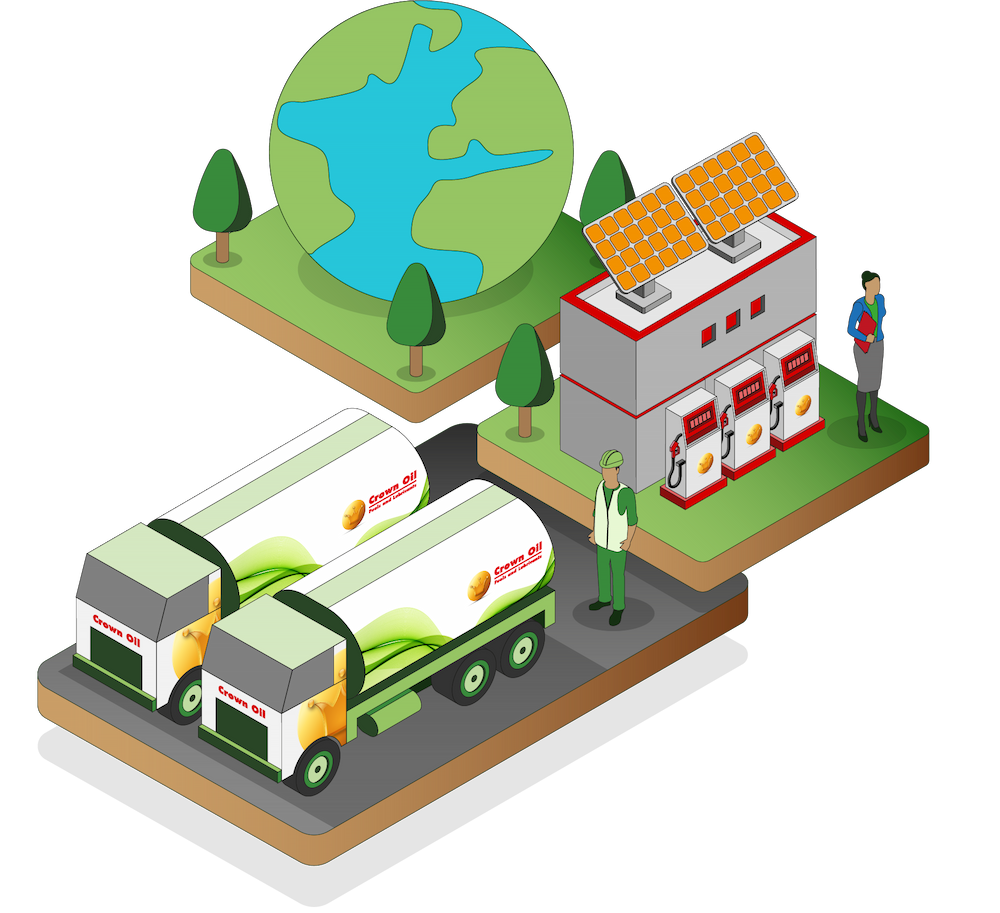Scope 3: indirect emissions – not owned
Scope 3 emissions are all indirect emissions (not included in scope 2) that occur in a company’s value chain – the upstream and downstream activities of direct business activities.
According to the GHG protocol, scope 3 emissions are split into 15 subcategories:
Upstream activities
These fall under several further categories.
Business travel is one of the most substantial scope 3 emissions, and includes air travel, rail, taxis, buses and private vehicles.
Employee commuting must also be reported as it’s a consequence of the emissions released through staff travelling to and from work.
Waste generated in operations refers to waste sent to landfills and wastewater treatments. Waste disposal emits methane (CH4) and nitrous oxide (N2O), which have an even more detrimental effect on our planet than CO2.
Purchased goods and services include the upstream (cradle-to-gate) emissions from the production of goods and services purchased by a company in the same year. When reporting, it helps to distinguish between the purchase of production-related products (materials, components and parts) and non-production-related products (office furniture, supplies and IT support).
Transportation and distribution transpire in upstream (suppliers) and downstream (customers) elements of the value chain. It includes the emissions released by land, sea and air, as well as those relating to third-party warehousing.
Fuel and energy-related activities include emissions relating to the production of fuels and energy purchased and consumed by the company that are not contained within scope 1 and 2.
Capital goods are final products that have a prolonged life and are used by the company to manufacture, store, sell and distribute a product or deliver a service. Examples include buildings, vehicles and machinery.
Downstream activities
Investments are included mainly for financial organisations; however, other businesses can still include them in their reporting. These fall into four categories: equity investments, debt investments, project finance, managed investments and client services.
Franchises are businesses that operate under a licence to sell or distribute another company’s goods or services within a specific location.
Leased assets resemble leased assets by the company (upstream) and assets to other organisations (downstream).
Use of sold products is also included, and relates to ‘in-use’ products that are supplied to customers. It measures the emissions resulting from product usage, even if it varies substantially. For example, the use of an iPhone will take many years to equal the emissions produced when it’s manufactured.
End-of-life treatment relates to products sold to customers and is reported in the same way as waste generated during operations. Businesses must measure how their products are disposed of; however, this can be challenging as it tends to depend on the customer.




